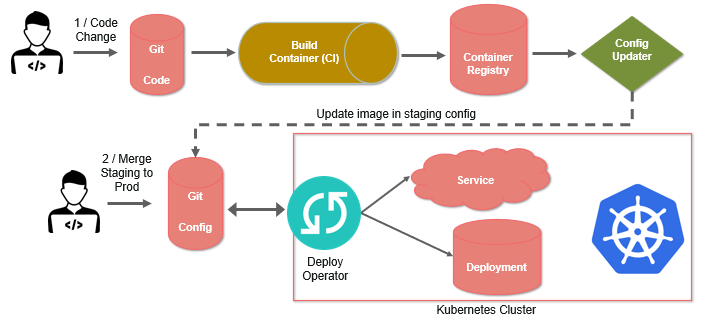
Are you tired of manually deploying your containers and managing them? Do you want to streamline your container management process and make it more efficient? Then GitOps might be the solution for you.
GitOps is an approach to continuous delivery that uses version control systems like Git to manage infrastructure and application deployments. It allows you to manage your infrastructure and application configurations declaratively, which means you define what you want your infrastructure to look like, and the system will make it happen.
In this article, we will discuss how to implement GitOps for containers and how it can benefit your organization.
What is GitOps?
GitOps is a methodology that uses Git as a single source of truth for declarative infrastructure and application management. It allows you to define your desired state in code and use Git to manage and synchronize your infrastructure and application configurations.
With GitOps, all changes to your infrastructure and application configurations are made through Git pull requests. This ensures that every change is reviewed, approved, and versioned, providing an audit trail of who made what changes and when.
Why use GitOps for containers?
Containerization has become an essential part of modern application development and deployment. Containers provide a lightweight and portable way to package applications and their dependencies, making it easier to deploy and manage them.
However, managing containers can be challenging, especially when you have to manage multiple containers across multiple environments. This is where GitOps comes in. GitOps provides a declarative way to manage your containers, making it easier to deploy and manage them.
How to implement GitOps for containers?
Implementing GitOps for containers involves the following steps:
Step 1: Define your desired state in code
The first step in implementing GitOps for containers is to define your desired state in code. This means defining your container configurations, including their dependencies, environment variables, and other settings, in a declarative format.
You can use tools like Kubernetes YAML files or Helm charts to define your container configurations. These tools provide a way to define your container configurations in a declarative format, allowing you to version and manage them using Git.
Step 2: Set up a Git repository
The next step is to set up a Git repository to store your container configurations. You can use any Git hosting service like GitHub, GitLab, or Bitbucket to host your repository.
Make sure to create a separate repository for your container configurations to keep them separate from your application code.
Step 3: Set up a GitOps tool
The next step is to set up a GitOps tool to manage your container deployments. There are several GitOps tools available, including Flux, Argo CD, and Jenkins X.
These tools provide a way to synchronize your Git repository with your container deployments, ensuring that your container configurations are always up-to-date.
Step 4: Configure your GitOps tool
Once you have set up your GitOps tool, the next step is to configure it to work with your container deployments. This involves configuring your GitOps tool to watch your Git repository for changes and automatically deploy your container configurations when changes are made.
You can also configure your GitOps tool to monitor your container deployments and automatically roll back changes if they fail.
Step 5: Deploy your containers
The final step is to deploy your containers using GitOps. To do this, you simply need to make changes to your container configurations in your Git repository. Your GitOps tool will automatically detect these changes and deploy them to your container environment.
Conclusion
GitOps provides a declarative way to manage your container deployments, making it easier to deploy and manage your containers. By defining your desired state in code and using Git as a single source of truth, you can ensure that your container configurations are always up-to-date and consistent across all environments.
With GitOps, you can streamline your container management process, reduce the risk of errors, and increase the speed of deployments. So why not give it a try and see how it can benefit your organization?
- Degree Pursuit: Navigating the Path to Educational Excellence - July 4, 2024
- Why Is Studying English Important in a Business Environment? - July 4, 2024
- Top 10 Data Science Skills You Need in 2024 - July 3, 2024

